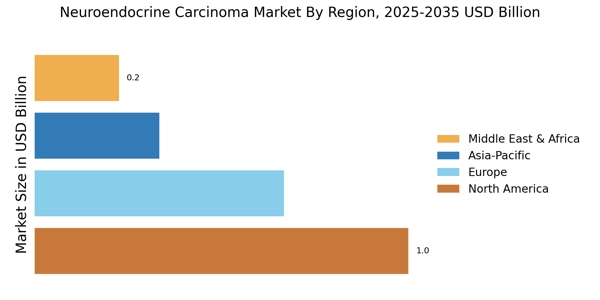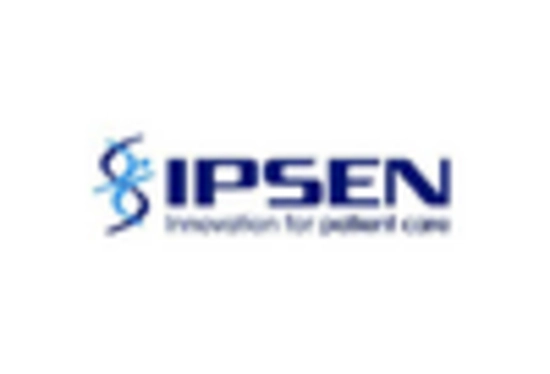Advancements in Treatment Modalities
The Neuroendocrine Carcinoma Market is significantly influenced by advancements in treatment modalities. Recent innovations in targeted therapies and immunotherapies have shown promising results in managing neuroendocrine tumors. For instance, the introduction of peptide receptor radionuclide therapy (PRRT) has transformed the treatment landscape, offering new hope for patients with advanced disease. Additionally, the development of novel agents such as somatostatin analogs has enhanced treatment efficacy and improved patient outcomes. Market data suggests that The Neuroendocrine Carcinoma Market is projected to grow at a compound annual growth rate (CAGR) of around 10% over the next few years, reflecting the increasing investment in research and development of effective treatment options.
Investment in Research and Development
Investment in research and development (R&D) is a crucial driver of the Neuroendocrine Carcinoma Market. Pharmaceutical companies and research institutions are increasingly allocating resources to explore novel therapeutic approaches and improve existing treatment options. This focus on R&D is likely to yield breakthroughs in understanding the biology of neuroendocrine tumors, leading to the development of targeted therapies and personalized medicine strategies. Market analysts project that the R&D expenditure in oncology, particularly for neuroendocrine tumors, will continue to rise, potentially reaching billions of dollars in the coming years. Such investments are expected to foster innovation and enhance the overall treatment landscape for neuroendocrine carcinoma patients.
Growing Awareness and Education Initiatives
The Neuroendocrine Carcinoma Market is benefiting from growing awareness and education initiatives aimed at both healthcare professionals and the general public. Organizations dedicated to neuroendocrine tumors are actively promoting educational campaigns to enhance understanding of the disease, its symptoms, and the importance of early diagnosis. This increased awareness is likely to lead to earlier detection and treatment, which can significantly improve patient outcomes. Furthermore, as more healthcare providers become educated about neuroendocrine carcinoma, the likelihood of appropriate referrals and treatment plans increases. This trend is expected to drive market growth as more patients seek specialized care and innovative therapies tailored to their specific needs.
Increasing Incidence of Neuroendocrine Tumors
The rising incidence of neuroendocrine tumors (NETs) is a primary driver of the Neuroendocrine Carcinoma Market. Recent data indicates that the prevalence of NETs has been steadily increasing, with estimates suggesting that the annual incidence rate may reach approximately 6.98 per 100,000 individuals. This trend is likely attributed to improved diagnostic capabilities and heightened awareness among healthcare professionals. As more cases are identified, the demand for effective treatment options and innovative therapies is expected to surge, thereby propelling market growth. Furthermore, the increasing recognition of NETs as distinct entities within oncology has led to a more focused approach in research and development, fostering advancements in therapeutic modalities tailored specifically for neuroendocrine carcinoma patients.
Emergence of Multidisciplinary Treatment Approaches
The emergence of multidisciplinary treatment approaches is reshaping the Neuroendocrine Carcinoma Market. Collaborative care models that involve oncologists, endocrinologists, radiologists, and other specialists are becoming increasingly prevalent. This integrated approach allows for comprehensive management of neuroendocrine tumors, addressing the complex needs of patients. Evidence suggests that patients receiving multidisciplinary care experience improved outcomes and quality of life. As healthcare systems recognize the benefits of such collaborative models, there is likely to be a shift towards more holistic treatment strategies. This trend not only enhances patient care but also drives demand for a wider array of therapeutic options, thereby contributing to the growth of the neuroendocrine carcinoma market.


















Leave a Comment